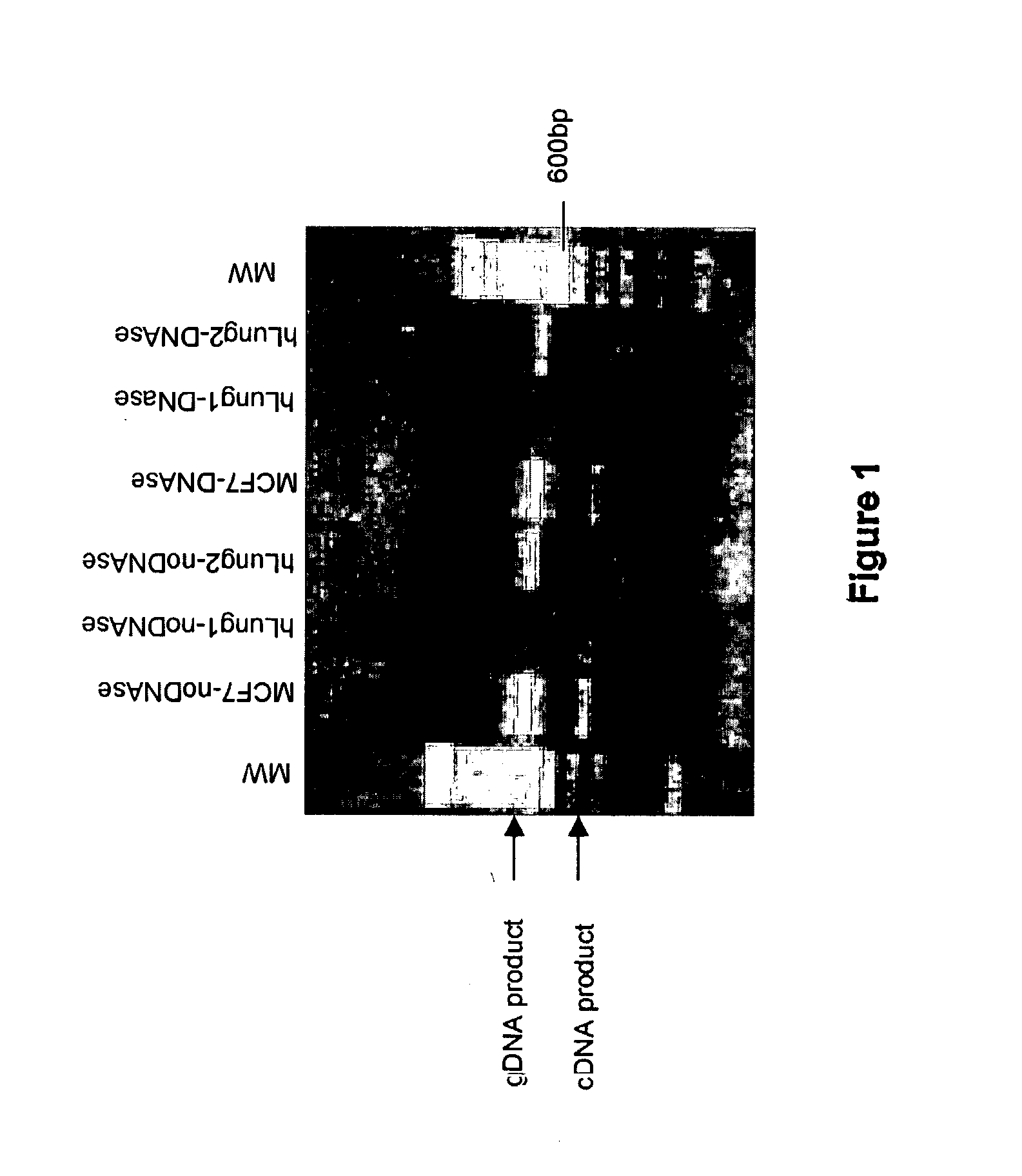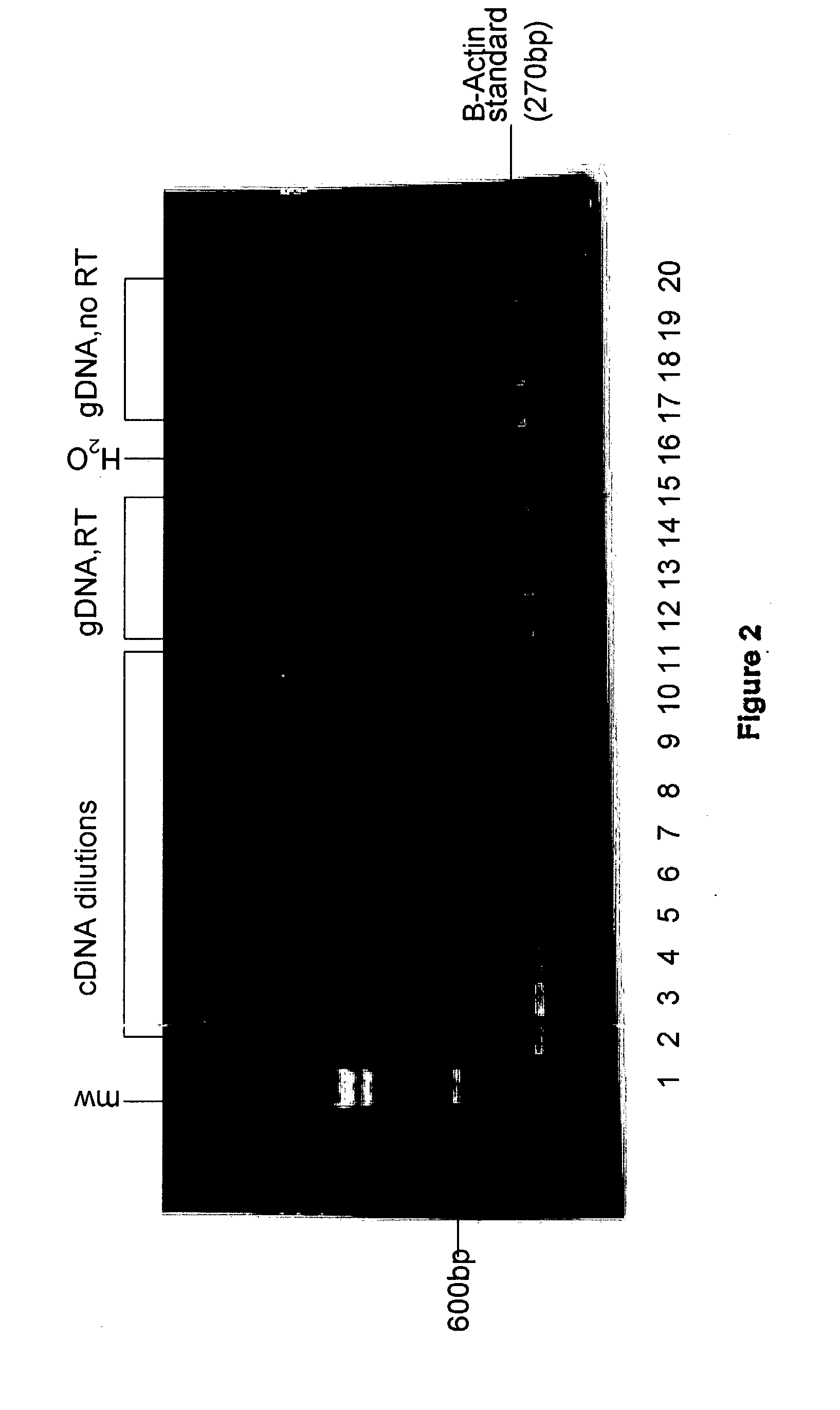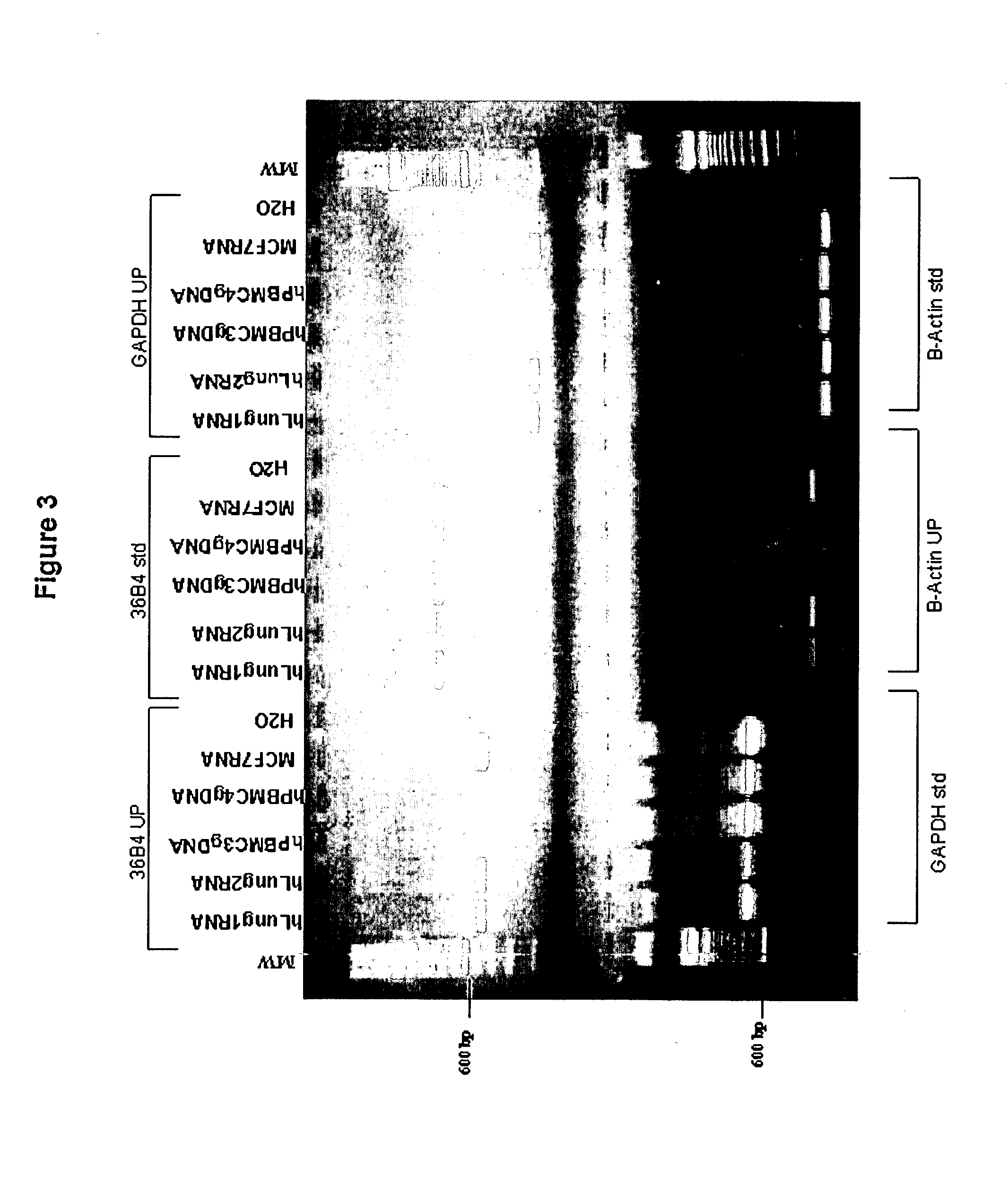Universal RT-coupled PCR method for the specific amplification of mRNA
a pcr method and specific amplification technology, applied in the field of universal rt-coupled pcr method for specific amplification of mrna, can solve the problems of unsuitable optimal gene expression sensitivity strategies, unsuitable pcr primers, and inability to achieve optimal gene expression sensitivity, so as to avoid the effect of gene expression dna amplification
- Summary
- Abstract
- Description
- Claims
- Application Information
AI Technical Summary
Benefits of technology
Problems solved by technology
Method used
Image
Examples
example 1
[0167] A. DNase Treatment of Total RNA Isolated From Lung Tissue
[0168] Materials and Methods
[0169] 1) RNA isolation: Total RNA was extracted from approximately 100 mg of frozen human lung tissue using a thiocyanate guanidinium-based method (TRI Reagent protocol, Molecular Research Center Inc., Cincinnati, Ohio). Lung tissue was fractioned and pulverized using liquid nitrogen to minimize RNA degradation. The frozen pulverized lung tissue was then immediately immersed in TRI Reagent and RNA isolation was performed according to manufacturer protocol. RNA was also isolated from MCF7 breast cancer cells harvested from a 25 cm.sup.2 culture flask grown to confluence, according to the Tri Reagent protocol. Human lung total RNA was purchased as a standard, from Clontech (Palo Alto, Calif.), which had been isolated by the manufacturer using a guanidinium-based chemical method.
[0170] 2) DNA isolation: DNA was isolated from viably frozen peripheral blood mononuclear cells using a Puregene.RTM....
example 2
[0183] A. Quantitative Real-Time RT-PCR and PCR Analysis Using .beta.-actin Standard Primers
[0184] Total RNA was isolated from normal human lung tissues and lung tumors using a thiocyanate guanidinium-based method (Tri.RTM.-Reagent protocol, Molecular Research Center, Inc., Cincinnati, Ohio) as discussed in Example 1. Standard reverse transcription RT-PCR was performed as in Example 1 except that 1.0 .mu.l of 1.times.SYBR Green I dye (Molecular Probes, Inc., Eugene, Oreg.) was added to the PCR reaction.
[0185] Results
2TABLE 2 Quantitative real-time RT-PCR of isolated total RNA using standard .beta.-actin primers: RT-PCR versus PCR only (data derived from Figures 4A and 4B) meanCRO meanCRO RT-PCR (FIG. PCR Sample 4A) (FIG. 4B) Difference 16t 12.31 17.17 4.83 58t 15.96 21.02 5.06 58nt 17.00 20.66 3.66 27821 16.31 15.99 0.32.sup.1 2782nt 21.782 24.14 2.36 LDt 14.53 20.41 5.88 LDnt 18.79 25.05 6.24 H.sub.2O nd nd na
[0186] .sup.1Showed approximately equal product from RT-PCR as PCR alone ...
example 3
[0201] Universal RT-Coupled PCR Methods for the Analysis of Gene Expression in Small Amounts of Human Lung Tissue
[0202] As mentioned above, in certain situations it is desirable to measure gene expression in samples consisting of a small number of cells, or even a individual cells. Examples of such situations include analysis of gene expression of cells within microscopic tumor foci located within an otherwise normal tissue, and the analysis of gene expression of specific subtypes of neurons within a particular brain region. Similarly, there are often situations in which, through circumstance, only small amounts of tissue are available for analysis, such as if only limited amounts of tissue can obtained from a patient in a biopsy or swab, or when analysis of gene expression in forensic samples is required. In such situations, only limited amounts of material are available from which RNA can be extracted, used in RT reactions for the generation of cDNA, and analyzed by PCR. This pres...
PUM
| Property | Measurement | Unit |
|---|---|---|
| temperature | aaaaa | aaaaa |
| temperature | aaaaa | aaaaa |
| total volume | aaaaa | aaaaa |
Abstract
Description
Claims
Application Information
 Login to View More
Login to View More - R&D
- Intellectual Property
- Life Sciences
- Materials
- Tech Scout
- Unparalleled Data Quality
- Higher Quality Content
- 60% Fewer Hallucinations
Browse by: Latest US Patents, China's latest patents, Technical Efficacy Thesaurus, Application Domain, Technology Topic, Popular Technical Reports.
© 2025 PatSnap. All rights reserved.Legal|Privacy policy|Modern Slavery Act Transparency Statement|Sitemap|About US| Contact US: help@patsnap.com



